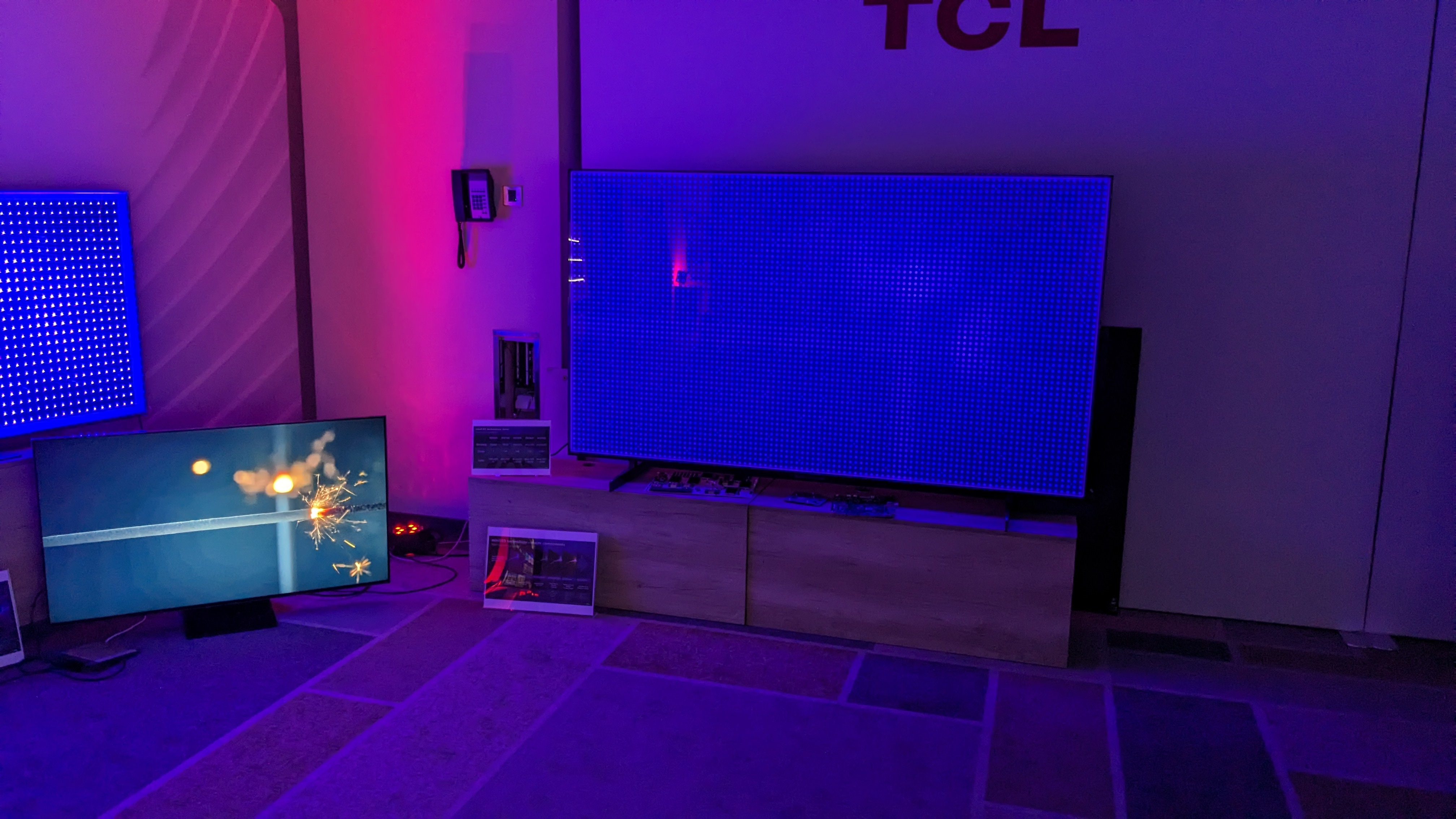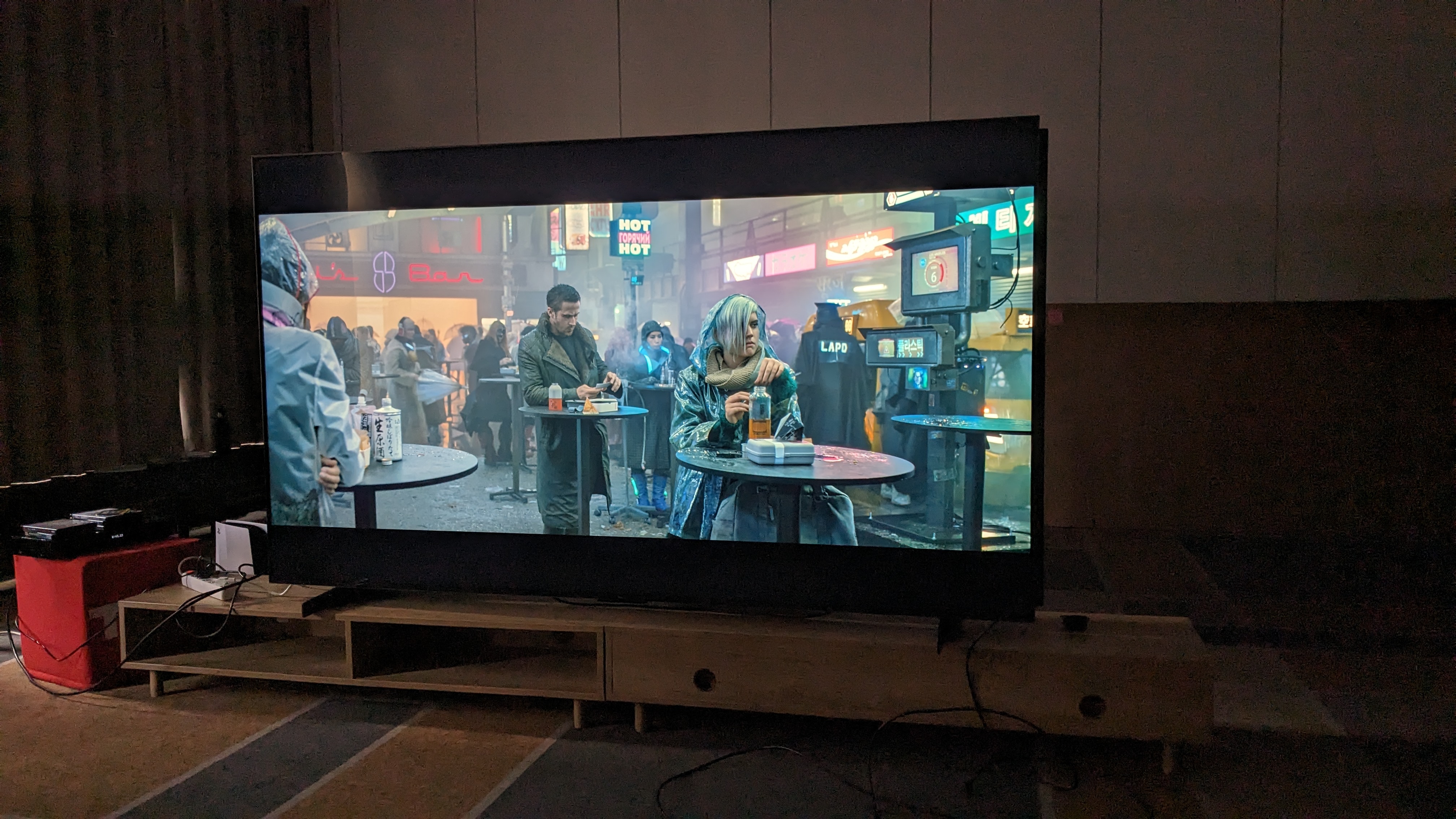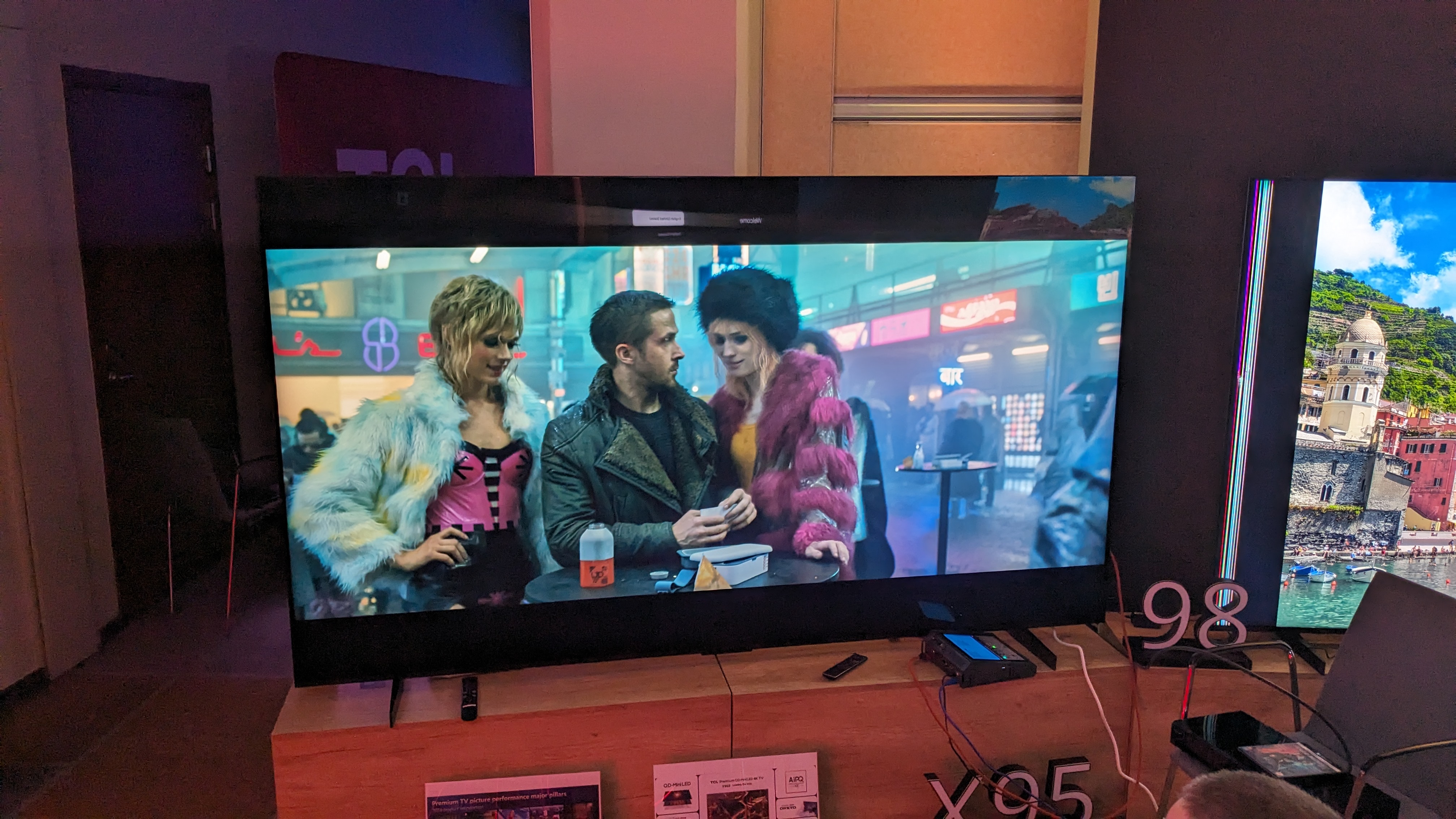I saw a mini-LED 4K TV demo without the pixels – and wow, do more local dimming zones make a difference
Consider local dimming zones on your next TV purchase

I recently attended TCL’s ‘Experts meet Experts’ conference in Warsaw, Poland and saw a number of innovations, from giant, 98-inch TVs to super bright mini-LED models boasting over 5,000 nits peak brightness. There was also a wide range of tech demonstrations happening at the event, including a projector vs a mini-LED TV and different HDR formats played on the same TV.
One demonstration in particular caught my eye. It was a lineup of TCL’s own TVs with the panels taken off. That’s right: no pixels, no colors, etc., just the TV’s frame and backlight. Why was this so fascinating? Because hooked up to these pixel-less sets was another reference TV running demo video clips. These same clips ran through all the other sets and it showed not only the difference between cheaper and premium models, but also the difference the number of local dimming zones can make.
Firstly, what are local dimming zones? Local dimming is a process that improves contrast and black levels on an LED or mini-LED TV by dimming a specific range of LEDs in its backlight based on the picture content being displayed, hence a ‘zone’. The more local dimming zones a TV has, the more evenly and accurately it can carry out that task.

Regular LED TVs generally have many fewer dimming zones than mini-LED TVs and this can often result in an image with uneven blacks across the screen, something we found in our hands-on with the 98-inch P745, one of the more entry-level options in TCL’s lineup. In more premium TVs, such as mini-LED models, more local dimming zones are used and that results in a smoother transition between shadows and highlights and a more accurate, better-quality image.
There are different types of backlights on LED TVs, with the main ones being edge-lit, direct-lit and full-array. Edge-lit TVs have their LEDs on the edge of the set itself and as a result suffer from black-uniformity issues the most. Direct-lit sets have their LEDs directly behind the panel, so can do a better job of improving screen uniformity and contrast. But these also suffer from backlight blooming, which is where a halo appears around bright objects set against a dark background. As the name implies, full-array sets use a more extensive and better distributed arrangement of LEDs than Direct-lit models, which allows for contrast to be even more precise, though they are still prone to backlight blooming.
So, with all this in mind, what were the differences between the five TVs featured in the demo?

Mini-LED magic on show
Several different videos were displayed during the demo, but the main one we’ll discuss here is an HDR footage reel that showed a lightbulb against a pitch black background. This was perfect for demonstrating the difference between the sets and their varying local dimming zones.
Sign up for breaking news, reviews, opinion, top tech deals, and more.
The first set in the lineup, the 55-inch C645, is a QLED TV that features no local dimming whatsoever. As a result, it was impossible to see the lightbulb on the TV’s raw backlight – it was simply a small group of white lights that got very slightly dimmer and brighter. Next was the 55-inch C745, which was listed as having 140 local dimming zones. As the LEDs tracked the image shown from the reference TV, the main shape of the lightbulb began to appear onscreen but again it wasn’t clear what was being displayed.
The next TV was the 65-inch C835. This set was listed as having 280 dimming zones (double the amount in the C645) and on it the lightbulb became clearer and there was some detail in the image rather than it appearing as an indistinct shape. The second to last TV was the 65-inch C845, which featured 576 dimming zones. On this set, the lightbulb was not only a fully formed shape, but detail such as the filament also started to become even clearer.
The final TV, the 85-inch X955, was listed as having over 5,000 dimming zones. On this set, the lightbulb was a fully formed image that I could see clearly as if the pixels in the display panel were there, which was seriously impressive.
The link between the three sets where the image was clearest? You guessed it: a mini-LED backlight. Mini-LED TVs are much brighter than regular LED ones, often reaching peak brightness levels of between 1,500-2,000 nits (TCL claims 5,000 nits for the X955) with the result that contrast is stronger than on regular LED TVs.

With the same scene from Blade Runner: 2049, the TCL X955 (second), which has more dimming zones, displayed better color and contrast than the the TCL C805 (first), even though both are mini-LED TVs.

Final thoughts
Not only this demo, but the TCL conference as a whole showed the importance of dimming zones for getting the best quality picture from movies, TV shows and games. With a row of un-modified sets standing side by side in another demo, the advantages of mini-LED over LED were further driven home as mini-LED had better contrast, higher brightness, punchier colors, and more detail.
However, it is worth noting that although more local dimming zones is a good thing, even sets that use a full-array backlight with a high number of zones are subject to blooming and black crush (the effect where a darker image can appear too dark). To get an image with high contrast and the deepest and most accurate shadows, you’ll instead want to look at the best OLED TVs.
OLED TVs use self-emitting pixels that dim individually rather than relying on a backlight panel (hence the O in OLED, which stands for Organic). For this reason, they aren’t subject to the same blooming effects found in LED and mini-LED TVs. But, if you’re looking for an OLED TV in a bigger size (think 65-inch-plus), you’ll be paying more money. Thanks to brands such as TCL and Hisense, mini-LED TVs are becoming a lot more affordable in these larger sizes.
Having been through TCL’s demo, I can confirm that if you're looking to invest in a new LED or mini-LED TV, buy one with the highest number of local dimming zones as it really does make a heck of a difference!
You might also like...

James is the TV Hardware Staff Writer at TechRadar. Before joining the team, he worked at a major UK based AV retailer selling TV and audio equipment, where he was either telling customers the difference between OLED and QLED or being wowed by watching a PS5 run on the LG 65G2. When not writing about the latest TV tech, James can be found gaming, reading, watching rugby or coming up with another idea for a novel.